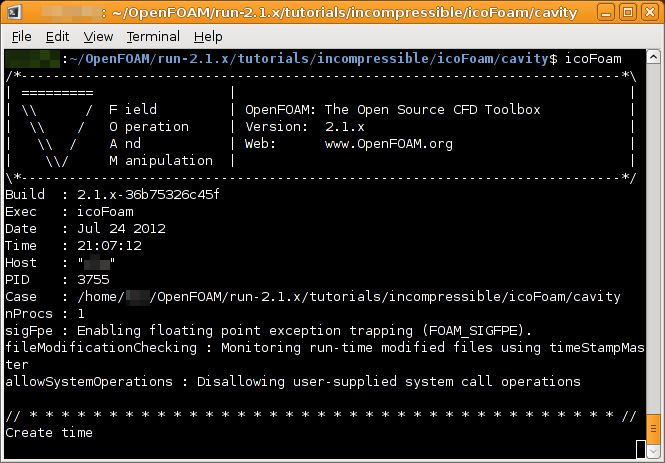Original author(s) Written in C++ | Developer(s) CFD Direct | |
 | ||
Initial release 10 December 2004; 12 years ago (2004-12-10) Stable release 4.1 / 13 October 2016 (2016-10-13) Repository github.com/OpenFOAM/OpenFOAM-dev | ||
OpenFOAM (for "Open source Field Operation And Manipulation") is a C++ toolbox for the development of customized numerical solvers, and pre-/post-processing utilities for the solution of continuum mechanics problems, including computational fluid dynamics (CFD). The code is released as free and open source software under the GNU General Public License. The OpenFOAM name was registered by OpenCFD Ltd in 2007 and non-exclusively licensed to the OpenFOAM Foundation Ltd in 2011.
Contents
History
OpenFOAM (originally, FOAM) was created by Henry Weller from the late 1980s at Imperial College, London, to develop a more powerful and flexible general simulation platform than the de facto standard at the time, FORTRAN. This led to the choice of C++ as programming language, due to its modularity and object oriented features. In 2004, Henry Weller, Chris Greenshields and Mattijs Janssens founded OpenCFD Ltd to develop and release OpenFOAM. On 8 August 2011, OpenCFD was acquired by Silicon Graphics International (SGI). At the same time, the copyright of OpenFOAM was transferred to the OpenFOAM Foundation, a newly founded, not-for-profit organisation that manages OpenFOAM and distributes it to the general public. On 12 September 2012, the ESI Group announced the acquisition of OpenCFD Ltd from SGI. In 2014, Weller and Greenshields left ESI Group and continue the development and management of OpenFOAM, on behalf of the OpenFOAM Foundation, at CFD Direct.
Syntax
One distinguishing feature of OpenFOAM is its syntax for tensor operations and partial differential equations that closely resembles the equations being solved. For example, the equation
is represented by the code
This syntax, achieved through the use of object oriented programming and operator overloading, enables users to create custom solvers with relative ease. However, code customization becomes more challenging with increasing depth into the OpenFOAM library, owing to a lack of documentation, and heavy use of template metaprogramming.
Extensibility
Users can create custom objects, such as boundary conditions or turbulence models, that will work with existing solvers without having to modify or recompile the existing source code. OpenFOAM accomplishes this by combining virtual constructors with the use of simplified base classes as interfaces. As a result, this gives OpenFOAM good extensibility qualities. OpenFOAM refers to this capability as run-time selection
Structure of OpenFOAM
OpenFOAM is constituted by a large base library, which offers the core capabilities of the code:
The capabilities provided by the library are then used to develop applications. Applications are written using the high-level syntax introduced by OpenFOAM, which aims at reproducing the conventional mathematical notation. Two categories of applications exist:
Each application provides specific capabilities: for example the application called blockMesh is used to generate meshes from an input file provided by the user, while another application called icoFoam solves the Navier-Stokes equations for an incompressible laminar flow.
Finally, a set of third-party packages are used to provide parallel functionality (i.e.OpenMPI) and graphical post-processing (ParaView).
Capabilities
OpenFOAM solvers include:
In addition to the standard solvers, OpenFOAM's syntax lends itself to the easy creation of custom solvers.
OpenFOAM utilities are subdivided into:
License
OpenFOAM is free and open source software, released under the GNU General Public License version 3.
